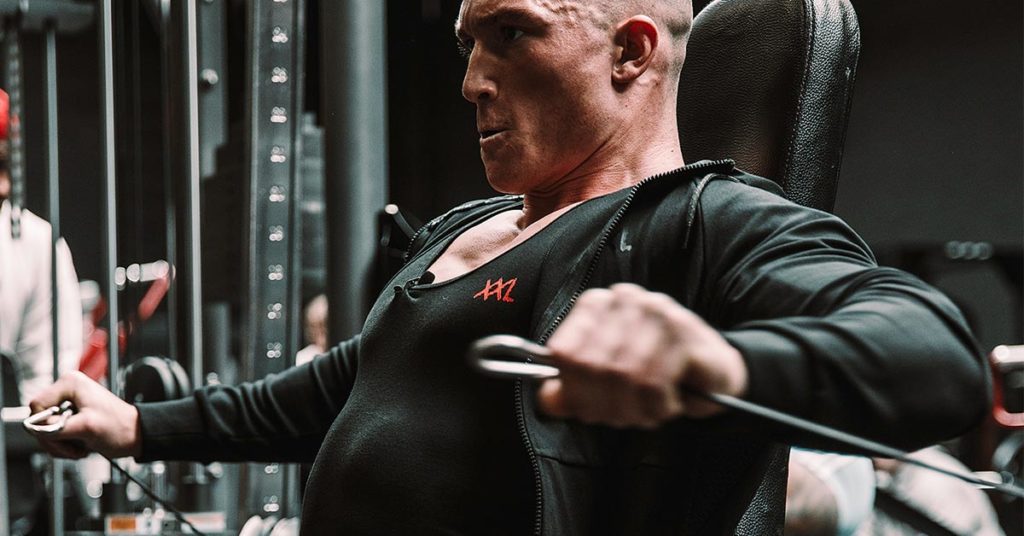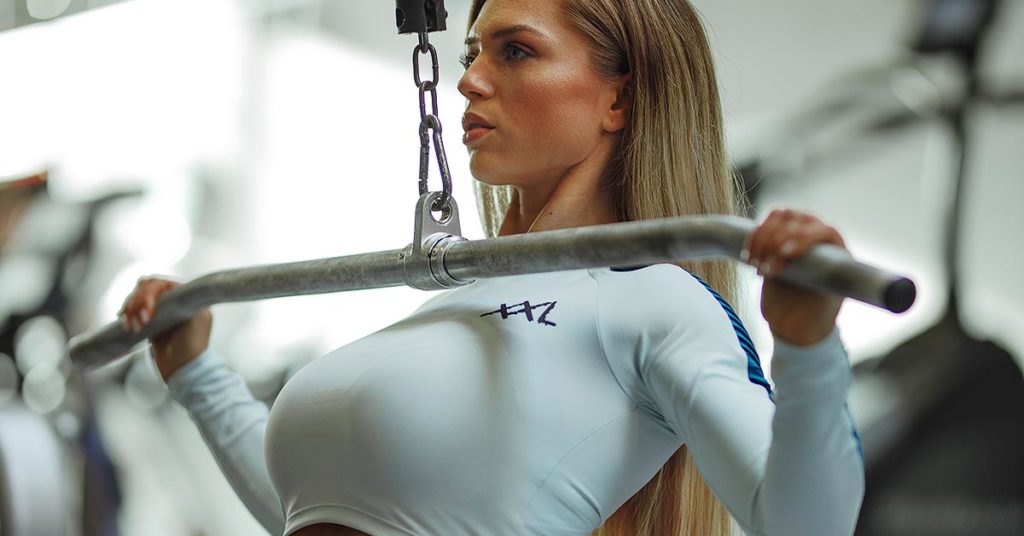
For a start, it is good to realize that there is no black and white, as with all other puzzles and problems related to physiology. Each body reacts differently to stress, can handle a different amount of stress, has more or less low carbohydrates with regard to sleep quality, may or may not train legs in the last week without retaining water, etc etc. However, this article will explain. discuss the principles of contest prep and what you should take into account and how you can manipulate the effects and results as well as possible.
I want to address a number of topics that many people have questions or are unclear about when it comes to preparing for a shoot or prep. We will have covered many of these topics in general before, so you can always refer to the other articles for further information. However, I only want to look at these topics in the context of a contest prep for now.
CARDIO DURING A CONTEST PREP
Some people literally do hours of cardio a day, others sometimes not at all. Without going into too much detail (for deeper information, see the cardio article ) there will be absolute differences between people whether or not they should do cardio and how much; Cardio becomes especially interesting when it otherwise becomes difficult to meet your needs within your limited calorie budget. However, cardio also costs recovery and accumulates stress.
What I do want to give you is that at the end of a prep cardio would rather run down than up; Since the last weeks of a prep for the body are the hardest because reserves continue to shrink, hormone levels become less and less favorable and because recovery and sleep will be at a minimum, limiting stress on the body is wise here. To put a concrete number on this, 3 to 4 hours a week should certainly be a maximum; preferably as little as possible.
Of course you want to be on stage as dry as possible and you can only lower your diet that far; If you fail to do so quickly enough, the choice is simple: Or plan a later date, or more cardio. However, this means that the off-season could or should have been done differently and the preparation towards the prep could have been more optimal.
Many people think that strength training is for muscle maintenance or building and cardio for fat loss. Black and white. However, both forms of activity are on a continuum; for very sedentary people cardio can even lead to muscle growth and in addition, a good superset of legs will definitely ensure a higher heart rate and increased energy expenditure.
Regarding intensity, your energy level also has implications; You should do the highest intensity cardio (HIIT, see the cardio article ) optimally at the start of your contest prep, because more intensive activity leads to more stress and requires more recovery capacity; So by the end of your prep, your cardio would in any case become of lower intensity and where possible even partially or completely deleted.
What you have to take into account is that we do not want weight loss, but fat loss. Weight loss does not equal fat loss at all. For example, studies have shown that when you compare 2 groups in a caloric deficit (1 group sleep deprivation, the other sufficient sleep), that both groups will lose weight, but the group with sleep deprivation will lose less fat and more lean mass; This is also the case with a body that is pushed over the line by too much cardio, too much stress and too little recovery.

ECONOMY MODE AND ADAPTIVE METABOLISM
Another point that many people encounter is that it seems that an extra calorie deficit does little; they can be stable at 4000 kcal per day, but even a jump of 1000 kcal down does not seem to have any results. Very high calorie intake for bulking and very low for cutting. I also discussed a few things about this in the cardio article . This can be largely caused by changes in NEAT; your body is suddenly much more economical with movements and activity.
This can indeed happen, but the tricky thing as a coach of this story is that many people, as they get deeper into their diet, also start sneezing more, often without realizing it.
Some of this can be caused by the changes in hormones that accompany starvation. Cortisol will increase, the functioning of the thyroid gland will decrease. In addition, we often see a change in aldosterone, which can cause water retention, which masks progression on the scale and perhaps even with skinfold measurements.
TRAINING IN A CONTEST PREP
During your contest prep you naturally want to retain as much muscle mass as possible; there are some articles that claim otherwise, but certainly at a fairly advanced level and with such an energy shortage, the gain of mass will not be very significant. Activating actual new muscle tissue (I am not talking about sarcoplasmic hypertrophy ) is anyway more likely with a few grams per week than kilos, but that aside.
So the usual approach of adding more and more volume, sets and reps does not have to be the only approach and given the story above about building stress etc, this could even be one of the worst approaches. Make sure that your training in your prep is of good quality, but don’t always go to failure .
However, there are several methods of failure, as you have read in the previous article. Complete failure and even extended failure actually have no place in a contest prep, unless you really have a very good reason for it and periodically periodize it properly. However, I would recommend being careful about failure at all. Failure in such a nutritional state takes way too much recovery capacity and this will do more damage than good.
For the preservation of muscle tissue, many times less volume is required than the volume required for growth. However, every repetition you do will also have to be fixed; So don’t plan endless training sessions in this phase!
In addition, you have read in this article that the volume of training is not necessarily the most important. Certainly in a prep phase this story is much more true! These 2 seem to contradict each other, but that is because people do not deal with failure sparingly and sensibly at all; Training to failure can be a very good tool in your range, if it means that total training volume is lower. However, be careful and sensible about periodizing this!
This whole story does not mean, however, that it is best to run the same schedules for 10 weeks and only focus on strength. As discussed in the cardio article, the body will become more efficient in the movements it makes more often, both neurologically and metabolicly. Ultimately, this will result in being more economical. When you periodize your workouts (as I have described more often) from neuro to metabolic and alternate this correctly, the change in training stimulus will ensure that carbohydrates are stored more efficiently as glycogen, for example.
Diet and cardio aren’t the only variables that will lead you to a drier physically. Training absolutely must be fine-tuned to both.

THE IMPACT OF STRESS ON A CONTEST PREP
We have talked about this several times; I have devoted entire articles to this, but stress has also been mentioned a few times in this article. It is good to realize that a calorie deficit greater than you can fill by releasing energy from body fat is stressful for the body. The only way your body can deal with this is by increasing the stress response. This is the reason that stress hormones go up during exercise; fat oxidation is not sufficient to provide the necessary energy during such an activity and if nutrition is not available (sometimes even if it is present), the stress stimulus will have to be increased to make energy available, to boost blood sugar, etc.
So if you go too far in your calorie deficit, in your cardio, in your training or whatever your fat loss method, you create a situation where stress is higher than optimal and a situation of stress that will not lead to a positive outcome. Training stress has a positive outcome, if and only if it can be recovered from. In fact, all other types of stress detract from recovery and degrade the benefits of the resources or methods you want to use to get better or move forward. When you get stingy when it comes to muscle growth or fat loss, people take steps that are too big, which is more stressful than they bring benefits.
This could eventually result in a plateau. More is not always better. This is precisely why health plays such a huge role in the long term and why you can’t eat unhealthy food like an idiot for years, pound hard workouts and use extreme doses of junk and still expect good results. You will bump into a wall that you can no longer get over, even if you throw your cardio up even further, even if you train more often, even if you stuff more junk into it.
I also think that this is where the story comes from that refeeds are good for combustion, or that increasing the kcal intake helps the saving mode away; by increasing calories for a number of days, the body finally gets a little more breathing space in terms of recovery; this will reduce inflammation and stress, which in turn can result in, among other things, fluid loss; However, prevention is better than cure. And especially then sticking some plasters.
In addition, it is wise to take caffeine and other stimulants into account. These resources should boost your performance, not be essential to function in any way. They also have a very strong impact on the sympathetic nervous system; something that will not benefit recovery.
THE AMOUNT OF MUSCLE MASS DETERMINES A LOT
Another point to take into account is your total muscle mass; All the points described above and further points that I am going to describe apply more to people with more muscle mass; Boys from the open bodybuilding class will have to take all these factors into account a lot more than boys from the lower weight classes or women; The organs that are important for processing nutrients and waste (liver and kidneys) do not grow proportionally with your muscle mass when you put on tens of kilos of mass. Legs weighing 30 kilos each of a 120 kilo man to failure will cause a lot more inflammation and waste than legs of 15 kilos each of a bikini lady.
This is probably one of the reasons that Big Ramy hardly ever hits hard; It can literally take weeks for the body to fully recover from a heavy stimulus in a strong kcal shortage with that amount of mass. Of course this also applies to heavy powerlifters who are working towards a finish.
The tricky thing about this story is that you will have to find a middle way between doing too little and wanting to do too much. However, if you have a lot of mass and are used to training hard and going deep, you run the risk of wanting to do too much rather than too little. Be careful with this, try scrapping your sets to failure or throwing your volume down once a week earlier. There is a good chance that it will benefit your shape.

WATCH OUT WITH CONSTIPATION
The further you get in your contest prep, the less frequent bowel movements are likely to be. At competitions it regularly happens that athletes have not had a bowel movement for several days and are therefore very bloated on the podium.
This can have several causes, from stress to fiber intake. Stress has a huge impact on your intestines; have you ever skipped a night or slept badly and had a lot of gas the next day or no normal bowel movements?
Reducing stress can often be a very good solution for this; sleep more, plan rest days and eat more.
When your fiber intake is compromised due to a low energy intake, adding a fiber supplement can certainly make a contribution. However, fiber can contribute to the bulk of the stool, but may not necessarily promote urgency itself; if you add a lot of fiber without promoting bowel movements, you actually make the problem worse.
Adding fiber is especially advisable if the stool is watery.
However, if the stool is hard rabbit droppings, adding fiber will probably not do much, as this (could) indicate a dehydrated digestive tract, or that the stool is staying in the colon for too long, removing most of the fluid. One cause of this may be that you do not get enough essential nutrients; calories, or micronutrients (especially minerals), or water.
Whole foods may actually work against you towards D-day. Gastric acid production and bile production are both very expensive in terms of production; when these decrease, digestion will also be less. The following also applies here: Chew your food GOOD.
Adding magnesium may help with bowel movements; Magnesium citrate is not absorbed very efficiently and therefore ends up in the large intestine and can help to stir up bowel movements.
Laxatives are certainly not recommended, because they ensure that you will lose (even more) water and will draw it into the digestive tract.
Realize that all these points here will do nothing to little if too much stress or inflammation is the cause.
Diarrhea is also a possibility; this is also not desirable and may indicate inflammation in the digestive tract. Adding fiber or activated carbon can provide relief here, but the cause of the inflammation / stress will also have to be removed; most likely your training is too inflammatory.

DON’T TAKE RISKS WITH MOISTURE
Another common topic surrounding a competition is fluid intake; there are extremely many protocols in this, ranging from loading tens of grams of salt, gallons and gallons of water, to diuretics and everything in between.
Moisture is extremely important in our body, for transport, for bowel movements and also for full muscles. Completely eliminating fluid intake a full day before D-day can in many cases go very wrong. Not drinking water is not the same as not holding water.
In addition, water is needed for a full look; People who cut their entire fluid intake often think they should eat more carbs when they go flat, but water is the problem here.
(CARBOHYDRATES) LOADING
There are also different protocols for loading. These vary from a depletion workout after which enormous amounts of carbs are stowed away, to loading with fat, to everything in between.
It is very individual how people react to different macro relationships, but I want to say in any case that you have to be vigilant for a very full rumen on D-day. There are many foods that have a lot of volume, which is not necessarily beneficial in this last phase of a contest prep.
Another approach that is sometimes used is adding carbohydrates in advance and then not making too much claim on the glycogen stores, in order to allow fat to function in the energy supply, especially on showday. This can have a positive effect on vascularity.
In addition, the use of a balanced electrolyte product can offer a solution. Sodium can sometimes go well, but it can also mess up your entire shape if you do not check potassium, for example . This, along with a good carbs loading protocol, will allow for maximum volume of intra-cellular water. On show day, you could use fats and sodium to boost vascularity, along with possibly some citrulline , glycocarn, or an advanced glycogen product before pumping.
In terms of fat intake, it is wise to use oil sparingly, especially in this phase. Coconut oil, high-fat meat, and nut butters are great options. Another advantage of fats is that they do not require water and that they are much more energy-dense than the other macronutrients. However, separate your fluids with meals in this case.


